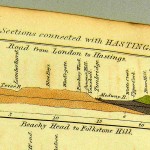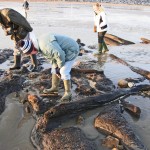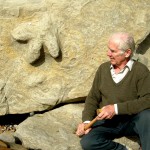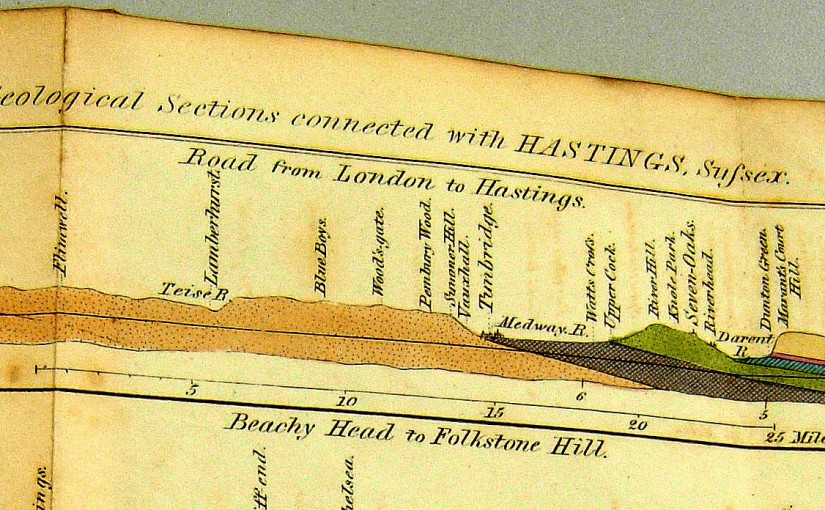By Jennie Ridd
In 1832 George Wooll, a lithographer who lived at 5 High Street, Hastings, and George Rubie, local schoolmaster, helped to found the Hastings Literary and Scientific Institute at Rubie’s rooms at 1 Burdett Place, George Street. They were well qualified for the task, since Wooll ran the Repository of Arts from Number 5 and sold the latest literary publications, and Rubie was “Professor of Mathematics, Astronomy, the Globe and Navigation”. In a collaborative enterprise, Wooll published Rubie’s “Celestial Atlas” in 1833, a “complete guide to knowledge of the Heavenly Bodies”, with special moving plates of the planets. This book is now owned by Hastings Museum.

The Georgian seaside resort of Hastings was expanding in response to demand from visitors, and it matched other popular watering places along the south coast except for having no public library or museum. When it was formed, the Literary and Scientific Institute immediately set out its objectives, which were “the formation of a Library of general knowledge from reference and circulation, the establishment of a Museum for the reception of Specimens in Natural history, Models, Apparatus &c., and the occasional delivery of lectures or discussions on religious or political subjects shall be permitted.” This was Wooll’s description of the Institute’s intentions contained in his later guidebook of Hastings.
It was no accident that the Hastings Institute was founded at this particular time. Georgian Britain was a prosperous country, where ideas of liberty abounded. Art, literature and architecture reflected the classical age and education was highly prized. In this “Age of Reason” learned societies such as the Royal Academy were being set up. Culture was the by-word, and alongside it, scientific discovery was becoming more prevalent and was both innovative and exciting. Eventually the old world of religion and the new world of science were bound to clash, especially when Charles Darwin published his “Origin of Species” in 1859.
The book triggered bitter controversy because it did not agree with the literal sense of the Book of Genesis in the Bible, but it did agree with the previous work of Georgian geologists in the 1820s and 30s who had made discoveries that challenged the Christian belief that the world was only six thousand years old.

The Sussex Weald had been important for geological studies since the initial interpretation of the landscape in the 1820s by the pre-eminent geologist Gideon Mantell, of Lewes. Born 3 February 1790, Mantell married Mary Ann Woodhouse in 1816, and ran a successful medical practice. Their passions were geology and palaeontology and in 1822 Mary Ann found the fossil tooth of a huge herbivore near Cuckfield. The Geological Society deemed it to be rhinoceros, but Mantell believed they had made a new discovery. In 1825, after a chance meeting with Samuel Stutchbury, a student of iguanas, the resemblance to these creatures became apparent, and Mantell’s belief was justified. The word “dinosaur” did not exist then, so the words “iguana tooth” were literally translated as “Iguanadon”.

It is probable that Gideon Mantell lectured at the Hastings Literary and Scientific Institute and that George Wooll and George Rubie met the renowned pioneer palaeontologist. What is certain though, is that George Wooll did know eminent geologist William Henry Fitton, an esteemed member of the Geological Society. As the visitors and residents of seaside resorts showed a growing interest in rocks and fossils, a need arose to publish the discoveries. William Henry Fitton carried out a stratigraphical survey of the Hastings area and was persuaded by some local relatives to write an account.
George Wooll published Fitton’s paper, entitled “A Geological Sketchbook of the Vicinity of Hastings” in his own guidebook “Strangers’ Guide to the Vicinity of Hastings” in 1833. Six beautiful, coloured diagrams accompany the text, showing the formation of the valleys and slopes, fossil teeth, jawbones, shell outlines and several stratigraphies. They were careful, neat and precise, and rather overshadowed Wooll’s colourless section of the guidebook.
The partnership was not a success, since Fitton’s work had been, in Wooll’s words, “insensibly extended to a greater length,” meaning that it completely detracted from his own part of the guidebook. Poor Wooll – his one opportunity to work with someone famous had entirely backfired on him. Fitton’s work was later published separately, he laid the groundwork for geological exploration in the area, and his work is still known and revered today.
Thanks to Fitton’s work, enthusiasts still visit the Hastings region today, famous for the survival of fossils from the Cretateous age, amongst which are small early mammals – our extremely distant ancestors. But dinosaurs dominated the world 135 million years ago and lived on until they went extinct 60 million years ago. You can still see their footprints in the sand and mud at Fairlight and Bexhill, the most common being Mantell’s Iguanadon, measuring 10 metres long, 4.5 metres high and weighing roughly 5 tonnes.

Hastings offers lots of opportunities to learn more about fossils and dinosaurs. Ken Brooks, a well-known local geologist of the Hastings and District Geological Society, gives frequent talks and also leads fossil-hunting walks along the beach. Hastings Museum has a good display of fossils, and a relatively new collection of fossils can be seen at the Shipwreck and Coastal Heritage Centre, where a huge cast of dinosaur bones discovered by Gideon Mantell is the centrepiece of the display. Not surprisingly, it is called the Mantellpiece! Children are always interested in the shark’s poo and if one of the staff is around, they sometimes get the chance to hold a piece. Although it is solid, the children nearly all smell it, and find it highly amusing! Then there is a small display on the original Dinosaur Hunters, who, alongside Gideon Mantell, pioneered new discoveries. The stories of William Buckland and Mary Anning are among the most fascinating, but it was Richard Owen who invented the word “Dinosaur” which is so familiar to us today.
“Hastings Town” June 2008
All articles, photographs, films and drawings on this web site are World Copyright Protected. No reproduction for publication without prior arrangement. (Hard Copy Back Numbers Still Available) © World Copyright 2015 Cinque Ports Magazines Rye Ltd., Guinea Hall Lodge Sellindge TN25 6EG
